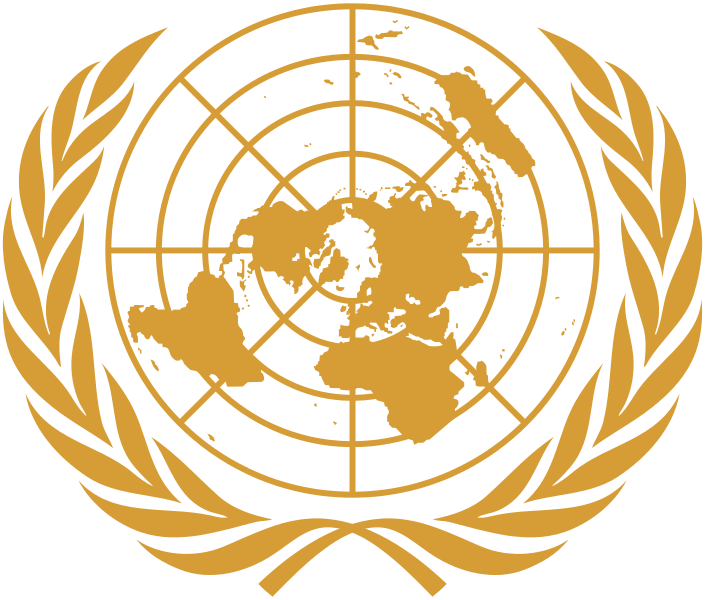Post-truth Politics and Collective Gaslighting
Note: This is a carefully condensed version of a longer paper, Post-truth Politics and Collective Gaslighting, in the Journal: Episteme, published online by Cambridge University Press: 27 July 2021, pp. 1-17. All footnotes and references are linked to the original.
Post-truth politics has been diagnosed as harmful to both knowledge and democracy. It can also fundamentally undermine epistemic autonomy, (trusting what one knows), in a way that is similar to the manipulative technique known as gaslighting. Using examples from contemporary politics, I identify three categories of post-truth rhetoric: the introduction of counternarratives, the discrediting of critics, and the denial of more or less plain facts. These strategies tend to isolate people, leaving them disoriented and unable to distinguish between reliable and unreliable sources. Like gaslighting, post-truth politics aims to undermine epistemic autonomy by eroding someone’s self-trust, in order to consolidate power. Shifting the focus to the effects on the victim allows for new insights into the specific harms of post-truth politics. Applying the concept of gaslighting to this domain may also help people recognize a pernicious dynamic that was invisible to them before, giving them an important tool to resist it.
“Post-truth” politics
In July 2014, Malaysia Airlines Flight 17 was shot down over Ukraine. There were no survivors. At the time, the Ukrainian military was involved in an armed conflict with pro-Russian separatists in the east of the country. It was soon suspected that the passenger plane was taken down with a BUK missile system. Both parties denied involvement. Yet as the evidence stacked against the Russia-backed separatists and it was revealed the BUK system belonged to the Russian army, the Kremlin could not seem to settle on its story. It began with claims that the plane had been filled with dead bodies, that the plane had been a fake, and that the real target had been Putin’s plane. Later it was claimed that MH-17 was shot down by a Ukrainian jet, later still that it had been a BUK missile, just not a Russian one. Government employees, state media and unofficially state-run social media accounts and fake news websites all helped spread this disinformation. Six years after the crash, the Kremlin is still introducing new counternarratives blaming Ukraine as well as the international investigation team (EUvsDisinfo 2019).
After weeks of raging forest fires in the Amazon, the Brazilian president Jair Bolsonaro fired the head of a government agency tracking deforestation. The agency had earlier disclosed the alarming rate at which the rainforest was shrinking. Bolsonaro defended his decision during a press conference, claiming people from within the government were trying to hurt the country’s image: “The numbers, as I understand it, were released with the objective of harming the name of Brazil and its government.” Around the same time he also dismissed his other most fervent critics, claiming NGOs were to blame for the fires, accusing the international media of “sensationalist attacks” and foreign critics of “colonialism” and of questioning Brazil’s sovereignty (Philips2019).
What these phenomena each have in common is a problematic relationship to truth. Truth, especially in the guise of facts and expert knowledge, is dismissed either as a dangerous fiction or as irrelevant. What we are left with is “post-truth” politics, which I broadly define as an epistemically dysfunctional type of discourse which is unconcerned with objective facts.
Crucially, all of these cases seem to obscure truth, but in slightly different ways, using different strategies. So why are these strategies so effective as political instruments, and why are they so dangerous?
Many theorists have tried to spell out the socio-political consequences of various post-truth practices, specifically, the threat they pose to democracy. There are multiple versions of this argument, all holding that in a post-truth society one or more of the conditions for legitimate democracy are undermined. Various authors have argued that post-truth politics undermines the trust in institutions (Suiter2016), and general transparency that are fundamental to democracy’s proper functioning. The latter view is also articulated by Fish (Fish2016), who emphasizes the significance of informed consent for the democratic practice of voting. He argues that the legitimacy of a democratic government’s power derives from its being chosen freely by the citizens. However, a voter can only really give their consent if important information regarding the policy or politician they vote for is neither withheld nor misrepresented. Fish states that playing “fast and loose with the truth” (2016: 211), obstructs the attitudes and practices that are needed for citizens to be properly informed. He concludes that post-truth politics is unable to “provide anything other than illusory democracy” (2016: 212).
But, post-truth politics is not just an expression of disregard for truth or an origin of false beliefs; it can also undercut our own faith in our capacity to distinguish between truth and falsehood, between reliable and unreliable sources. In this regard, it is similar to gaslighting – and an analysis in terms of gaslighting can help us identify a further harmful effect, namely the undermining of epistemic self-trust and thereby epistemic autonomy.
What is gaslighting?
 The term “gaslighting” is derived from the 1938 Patrick Hamilton play Gas Light and its two film adaptations, in which a Victorian husband attempts to have his wife diagnosed as mentally ill and taken away to an asylum so that he can obtain her fortune. He deceives her to make her believe she is becoming increasingly forgetful, and when she tells him about the footsteps she hears overhead at night, or about the gaslights in her room that she has seen dim suddenly, he convinces her she has been hallucinating. As a matter of fact, the footsteps and dimming lights were real, direct consequences of him searching upstairs for the expensive jewels his wife inherited.
The term “gaslighting” is derived from the 1938 Patrick Hamilton play Gas Light and its two film adaptations, in which a Victorian husband attempts to have his wife diagnosed as mentally ill and taken away to an asylum so that he can obtain her fortune. He deceives her to make her believe she is becoming increasingly forgetful, and when she tells him about the footsteps she hears overhead at night, or about the gaslights in her room that she has seen dim suddenly, he convinces her she has been hallucinating. As a matter of fact, the footsteps and dimming lights were real, direct consequences of him searching upstairs for the expensive jewels his wife inherited.
Gaslighting is now commonly defined as a type of manipulation aimed at having the victim doubt their own judgment, perception, and sense of reality (Stern2007; Abramson2014). In severe cases, like the one Hamilton portrays, this will cause the victim to question even their own sanity, leaving them feeling disoriented and confused at best, and desperate and depressed at worst.
Gaslighting is not an incident, but a process, an attempt to steadily undermine a person’s epistemic self-trust through manipulation, deceit, or both (Spear2019). But what does that mean, how does it work, why does it work, and why would anyone want to do it?
Let’s start with the target of gaslighting, the victim’s epistemic self-trust. According to Zagzebski (Zagzebski2012) and Spear (Spear2019), this is the basic belief that my cognitive faculties are overall reliable, that they generally deliver accurate data and that I am able to correctly form true beliefs on the basis of them. It entails trust in my own senses, memory, and reasoning capacities. It is usually a tacit belief, it is a belief that most of us have quite naturally or intuitively, and it forms the basis of any meaningful epistemic agency. If my epistemic self-trust is damaged, I will have little confidence in my own beliefs – if it is eradicated, I will have no basis on which to form beliefs at all.
I think the most precise way to describe what happens as a result of the gaslighting victim’s loss of self-trust is that their epistemic autonomy is undermined.
Epistemic or intellectual autonomy requires that we reflect on what to believe and whom to trust; that we conscientiously identify and manage epistemic authorities (2012: 250). Autonomy fundamentally depends on self-trust in my own faculties. If my self-trust is damaged, my epistemic autonomy suffers. This is the case with all successful gaslighting attempts. They do not just violate autonomy, but erode it steadily and sometimes lastingly. In more everyday terms, the loss of epistemic autonomy means confusion, disorientation, a feeling that you are going crazy, and an increasing dependence on others. Again, in the most severe cases, it amounts to the loss of any meaningful (that is, autonomous) epistemic agency, the destruction of the self, or indeed clinical depression.
All of these elements – confusion, lying, deception, isolation, denial, accusation and manipulation, are part of the gaslighting process (Abramson2014; Spear2019). Each of them help the gaslighter to undermine the epistemic self-trust of their victim. While none of them are necessary for gaslighting, they form a mutually reinforcing set of strategies and their combined use in ascending order of severity is what makes the gaslighting in Gaslight effective.
There is another important factor in gaslighting contributing to its effectiveness: the victim trusts their manipulator and/or depends on them in some way (Abramson2014: 19–20). Virtually all gaslighting cases described in the psychological literature involve romantic partners, friends, family members, co-workers or employers and employees. This is because gaslighting can only work if the victim is epistemically, emotionally or prudentially predisposed to believe the gaslighter. You trust them when they claim you misinterpret things, because they love you, or because they probably know better anyway. Or you may want to agree with them in order to avoid conflict, because they might otherwise leave you, or fire you. In these relationships of trust or dependency, it can appear to the victim that they are best off trusting the one person who pointed out their fallibility in the first place. Not only must the gaslighter have been in a better epistemic position in order to recognize this fallibility, they also cared enough to tell you about it and might even offer help. In fact, of course, trusting the gaslighter’s claim will only strengthen the dependency of the victim and further erode their autonomy.
Gaslighting is thus parasitic on a vulnerability that is inherent in trust relationships, exploiting the trust of the victim to have them distrust themselves and anyone who might restore their self-confidence. This arguably is one of its most pernicious features, and one that makes it particularly difficult to resist gaslighting efforts.
That leaves the question of why gaslighters do what they do. What could be the purpose of having someone else lose their self-trust? Abramson argues that gaslighters have an “inability to tolerate even the possibility of challenge” (2014: 9). They are not satisfied with just ignoring someone who disagrees, or even by having everyone else ignore or disbelieve them. Instead, they need that dissenter to not have the standing to issue challenges at all, and to not see themselves as having that standing. Abramson concedes that some gaslighters may be satisfied when their victim’s confidence is reduced enough for them not to issue any serious challenges anymore on a limited scope of topics. But she also rightly warns that self-doubt in one arena of life can easily spread to others, and that “where gaslighting is going on, it is often pervasive” (2014: 18). In the end, one of the central purposes of gaslighting is always to control the victim.
Post-truth politics and the loss of self-trust
Knowing the dynamics of gaslighting enables us to see the three subtypes of post-truth rhetoric in a new light. The introduction of counternarratives, the discrediting of (potential) critics, and the denial of a more or less plain fact each resemble gaslighting strategies. All of this is not to say there are no other forms of post-truth politics, or other effects besides the impact on epistemic autonomy. Different people respond differently to different interactions, and context matters. Some may experience a rise in self-trust when, say, their political opponents are being discredited and their own opinions are validated. Many, however, lose confidence when confronted with inconsistent and disorienting information.
The first type of post-truth politics I identified is the introduction of counternarratives. These can be realistic or farfetched, but they always contradict the dominant existing story. Putting an alternative account out there can help to mislead, but mostly to distract and confuse the public. All of these consequences are helpful for the person or institution on whom the actual truth reflects badly. The Russian government often uses this tactic as a form of propaganda. The disinformation around the MH-17 crash is an instructive example. The kind of stories that were spread were so extreme and oftentimes so contradictory that they did not seem directed at convincing people so much as at disorienting them. It is difficult to provide persuasive evidence of non-involvement, especially if you were in fact involved, but it is much easier to sow doubt. The truth is often nuanced, messy, and sometimes boring, so distracting attention with an exciting and outrageous fiction is usually quite simple. This psychological fact explains the effectiveness of fake news. The more such counternarratives are out there, the more people will start questioning the truth and whether or how they can tell what is true in the first place.
The discrediting of critics is the second category of post-truth rhetoric. Sometimes this happens on an individual level, when political opponents or critical journalists or scientists are dismissed as delusional, paranoid, or jealous. The first person to use the term gaslighting in a political context actually describes how this happened to Newt Gingrich. The then Speaker of the US House of Representatives was repeatedly provoked to anger by members of the Clinton administration in an effort to make him appear “hysterical” (Dowd1995). However, it is more common that critics are not discredited as individuals but as part of a corrupt institution. Here, Claims of “fake news” label that the press is the enemy of the people come to mind. It is a clear attempt to dismiss, or at least cast doubt upon the trustworthiness of a specific newspaper or a whole range of mainstream media. Scientific and academic institutions have also been subject to this treatment, as the example of Bolsonaro and the mapping of forest fires shows. Far-right parties in Germany and the Netherlands called upon students to report “leftist” teachers, claiming schools and universities are instruments of leftist indoctrination. In 2011, conservative radio host Rush Limbaugh even branded government, academia, science, and the media “The Four Corners of Deceit.” All of these examples show how discrediting is used to sideline and silence those individuals and institutions that tend to disagree. Accusations range from widespread unintentional bias to evil conspiracies. Very often, post-truth strategies will be used to discredit critics, especially traditional institutions of epistemic authority, as incompetent, untrustworthy, or both.
Where experts’ authority is questioned for the wrong reasons, those who would normally rely on their expertise are epistemically isolated. Most of the discredited institutions are traditional epistemic authorities which are trusted by the general public. When this trust is allegedly shown to be unfounded, the public will start to doubt their own ability to tell who is a trustworthy authority.
The third and final category of post-truth rhetoric I have identified is the denial of a more or less plain fact. There are many examples of this in contemporary politics, including climate change denial and birthers’ denial of their own birtherism. Most striking are those cases in which a politician denies having said or done something which was actually captured on record just days earlier. The primary aim of such denial is usually pragmatic: to save face, or to not have to take responsibility for the past statements. More interesting are instances where what is denied is a certain interpretation of what was said or done, or the intention behind it. For example, Dutch politician Thierry Baudet made some controversial statements about the role of women in contemporary society. When asked about these statements he rejected their literal interpretation, saying he only made them in the context of a book review. Meanwhile, most of those statements echo similar extremely conservative claims he had made before in different contexts. This kind of denial is more subtle, because it is difficult to prove the intended meaning behind a message. It is also more dangerous, because it allows politicians to make statements designed to convey a message to supporters, which is still ambiguous enough to deny to others that this was in fact the intended message. The burden is on the audience to always choose the most charitable interpretation, while the speaker gets to be as ambiguous as is convenient for them, using dog-whistles and fig leaves as they like. It is the perfect way to test more radical ideas or to stir up emotion without taking the corresponding responsibility.
The problem with such denial is not only that it is opportunistic and covers up socially unacceptable attitudes like sexism, racism and fascism, or unfortunate mistakes. It is also extremely confusing for the audience. When politicians, whom many people look up to, admire and trust, contradict themselves with so much confidence, it is not surprising when citizens start questioning whether they just heard that correctly, and possibly conclude that they have misunderstood. In all of these cases, the implicit or explicit suggestion is that the audience has misinterpreted or even misheard the message. Again, the epistemic autonomy of the listener is undermined through the erosion of their self-trust. This more subtle form of rhetoric is especially effective, since supporters can get what they want from the ambiguous communication, while opponents have nothing to grab on to. But those who have not chosen sides so decisively yet are left to wonder whether their ability to read tone and intent is functioning well enough for them to successfully navigate the politico-epistemic domain. It may seem unlikely that more extreme cases where plain facts are blatantly denied will have any effects on self-trust. But for those who are already confused and disoriented, such a move might actually lead them to question their own senses and sanity, especially if others around them act as if nothing strange has happened or even repeat the denial.
The question of how exactly we label the phenomenon I have drawn attention to is not the critical issue here. What matters is that, like gaslighting, the three categories of post-truth politics I have identified can undermine people’s self-trust. They have the same potential effects on epistemic agency, using the same strategies for sowing doubt and ensuring epistemic isolation. Regardless of whether this post-truth rhetoric is a proper form of gaslighting or rather a technique contributing to gaslighting effects, the very concept of gaslighting has allowed us to see how these strategies are effective, and indeed part of the same process. Applying the concept of gaslighting to the discussion on post-truth politics sheds new light on its nature and its dangers. These go beyond the effect on knowledge and the threat to democracy. One central problem with post-truth rhetoric is that it can undermine our epistemic autonomy, our ability to find our way in the realm of knowledge, and our capability to manage authorities. Shifting our attention to the impact on victims thus allows for new insights. Not only does it inform our understanding of post-truth politics, it also informs our understanding of what exactly gaslighting consists in and what heretofore unknown forms it may take.
This is an Open Access article, distributed under the terms of the Creative Commons Attribution licence (http://creativecommons.org/licenses/by/4.0/), which permits unrestricted re-use, distribution, and reproduction in any medium, provided the original work is properly cited.
Copyright © The Author(s), 2021. Published by Cambridge University Press
Original article: Rietdijk, N. (2021). Post-truth Politics and Collective Gaslighting. Episteme, 1-17. doi:10.1017/epi.2021.24







Hi Natasha,
Thank you very much for this. I recently read Sarah Chayes’ book Corruption in America. It mentions several of the same characters as your article! https://www.penguinrandomhouse.com/books/585789/on-corruption-in-america-by-sarah-chayes/ The networks Sarah describes use the techniques of manipulation that you describe. There appears to be an overlap too with the “dark triad” of personality types. https://www.psychologytoday.com/us/blog/dangerous-ideas/201910/psychology-s-dark-triad-and-the-billionaire-class
We used to be neighbors! I lived in Den Bosch from 1979 – 1985. I left Margaret Thatcher’s UK in 79 and landed in Ronald Reagan’s America in 85. This was the time when the pendulum was swinging to the right from 40 years of post depression and WWII liberalism to 40 years trickle-down economics and the erosion of personal and environmental protections. Gaslighting has enabled that.
I hope we are at another turning point where the pendulum will start to swing back. We have little hope of saving the planet unless it does.
Hou doe!
John